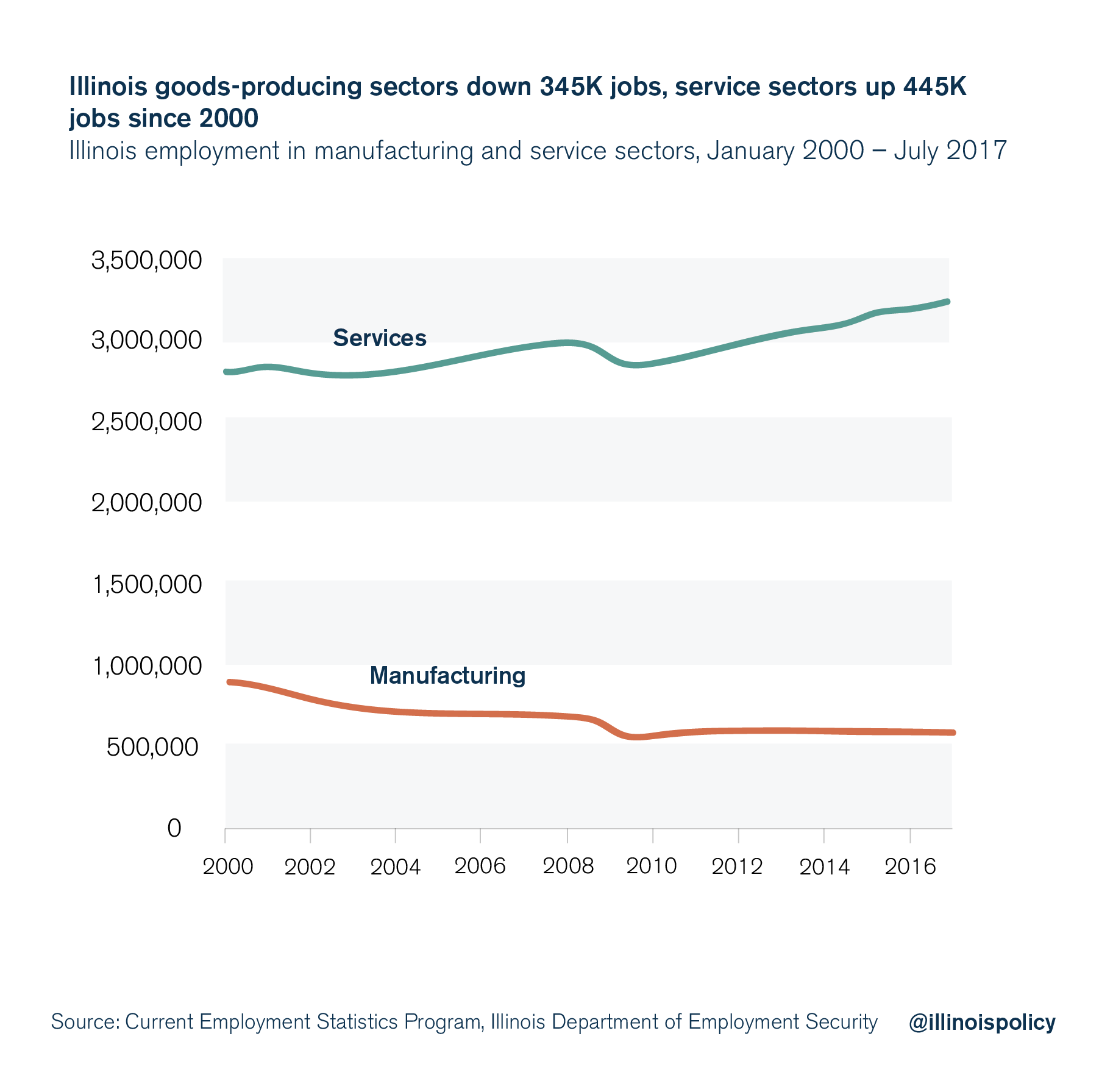Why international trade matters for Illinois
Illinois will need more foreign investment, and major reforms to the state’s business climate, in order to get off the weak economic path it now treads.
Gov. Bruce Rauner has just returned from an eight-day trip to Japan and China – his administration’s first international trade mission.
Illinoisans should hope the governor can help bring international job creators and investment to the state to stimulate a lackluster employment picture. Rather than being a burden on Illinois families, international trade has largely served as a blessing, and has the potential to jumpstart the Land of Lincoln’s sluggish growth.
State of the state
According to the Current Employment Statistics published by the Illinois Department of Employment Security, or IDES, Illinois employment growth has been disappointing in 2017.
However, despite sluggish labor market performance this year, the evidence is clear: Illinois has recovered from the job losses it suffered during the Great Recession. The Land of Lincoln gained 464,600 jobs since the end of the global financial crisis in 2010, mostly due to sustained employment growth in the service sectors, according to IDES.
While goods-producing sectors – mainly manufacturing – lost 345,500 jobs since 2000, service-sector industries continued to drive employment in the state, creating 444,600 jobs during the same time period.

Is trade to blame for the decline in manufacturing employment?
The long-term shift from goods-producing sectors – manufacturing – to services continues in Illinois and in the rest of the country. During that shift, the U.S. balance of trade has been negative, meaning the country imports more goods and services from foreign nations than it exports This has led many to blame international trade for the loss of U.S. manufacturing jobs.
When consumers buy imported goods instead of domestically produced goods, it is easy to see why a trade deficit can harm goods-sector employment. But to what extent are trade deficits actually responsible for the decline of U.S. manufacturing employment? Has trade or automation led to the decline of manufacturing employment?
New research published by the National Bureau of Economic Research examines evidence on sector-specific labor productivity and estimates that U.S. trade deficits can only account for 15.1 percent of the observed decline in the employment share of goods-producing sectors from 1992 to 2012. Instead, the bulk of the decline in manufacturing employment came from faster labor productivity growth in the manufacturing sector. In other words, American manufacturing workers can now do more with less. These facts suggest that a protectionist trade policy agenda aimed at reversing the trade balance would not bring back all the jobs lost to automation in the manufacturing sector. Instead, protectionist policies would harm the manufacturing sector further by reducing capital flows from abroad and by raising the cost of production materials.
In fact, economists widely agree that trade liberalization has had permanent positive effects on economic growth. Most job creation in the U.S. was largely due to trade deficit-induced inflows of capital from abroad that financed investment projects, generated wealth and lifted the standard of living of most Americans. This is because the U.S. trade deficit is financed by the selling of assets, bonds and equity that provide the financial capital necessary to fuel job creation and economic growth in the United States.
Luckily for Illinois, Rauner’s trip overseas shows the governor recognizes the benefits of international trade partnerships. The governor’s efforts to facilitate foreign investment in Illinois could have a significant impact on people across the state.
Solutions to manufacturing woes
While U.S. manufacturing employment has fallen in recent years, there are still many well-paying production jobs for which Illinois should compete. But Illinois has positioned itself poorly relative to its neighboring states in the competition for this work.
Illinois is home to the highest workers’ compensation costs in the region, which makes it expensive to hire workers. Illinois also has some of the highest property taxes in the nation, which drives up costs for property-intensive businesses such as factories. The mass exodus to neighboring states with lower workers’ compensation costs and property taxes and better overall business climates all reveal Illinois’ lack of competitiveness in this regard.
Illinois needs pro-growth reforms such as reining in workers’ compensation costs and the state’s sky-high property taxes to retain and attract new businesses, whether from home or abroad.
